Safety starts at home, and that means doing what you can to make each room in your home as hazard-free as possible. We've got safety tips and resources for every room of your house—from the front porch to the backyard.
The Complete Room-by-Room Safety Checklist
For over 11 years, SafeWise experts have conducted independent research and testing to write unbiased, human reviews (not robots). Learn more.
By signing up, you agree to our Terms and Conditions and Privacy Policy.
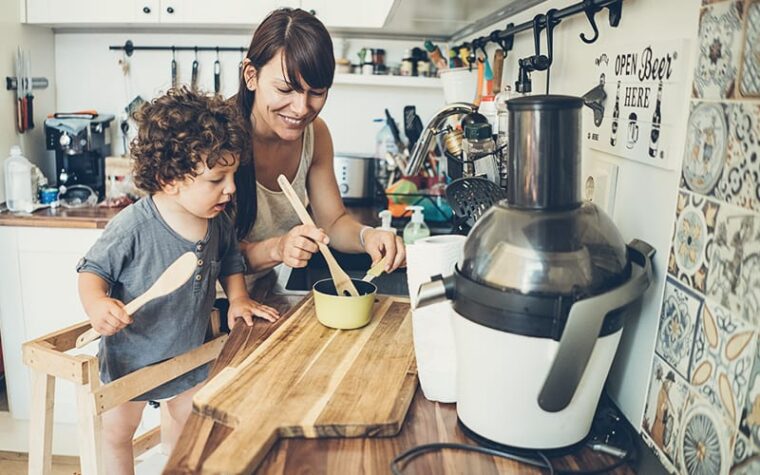
Kitchen safety checklist
Inspect appliances
Safety hazards abound in the kitchen, and appliances can be the biggest culprits. Give each appliance a good once-over with a sponge and a thorough test run to identify any potential safety hazards due to damage, improper installation, or age.
Check range hood
Make sure the range hood and fan are fully vented and free of greasy buildup before breaking in your culinary skills.
Clean coils and vents
Dust bunnies may sound cute, but they’re one of the most common fire hazards. Wipe down and vacuum all appliance coils and vents to keep fire danger at bay.
Check water filters
Clean drinking water is crucial, so keep your family’s water free of pollutants with a fresh water filter for your fridge, faucets, and anywhere else you get drinking water.
Make sure circuits aren’t overloaded
Refrigerators and other major appliances can use up a lot of energy and trip your home’s main breaker. If the circuit trips too often, it can overheat and lead to a potential electrical fire. Consult an electrician to find out if any of your appliances require a dedicated circuit.
Inspect drains and garbage disposal
Make sure the drains in the kitchen sink are free of clogs and buildup, and test the garbage disposal. Look for existing leaks and check under the sink for wet spots, mildew, and signs of prior leaks.
Install safety latches
If you have small children or pets, make sure they can’t get into dangerous household items like cleaners or knives. Add safety latches or locks to cupboards and drawers that house dangerous items.
Purchase a fire extinguisher
Almost half of all home fires are caused by cooking equipment.1 Protect your home and loved ones by purchasing and learning how to use a fire extinguisher.
Test smoke and carbon monoxide detectors
The kitchen should have both a smoke alarm and a carbon monoxide detector. Test both (along with all others throughout the house) and make sure the sensors are free of dust, which can interfere with proper detection. Change batteries if needed, or purchase a new smoke alarm and CO detector if yours are old or seem faulty.
For more tips about smoke and CO home safety visit our YouTube channel:
Post an emergency contact list
Make it easy to call for help during a stressful situation by posting an emergency contact list on the fridge. Include your work and cellphone numbers, as well as numbers for poison control, local fire and police stations, doctors, and the neighborhood watch association, as well as neighbors, friends, and family who can help in an emergency.
If you’re missing an item on this list, try free pick-up at a local Home Depot.
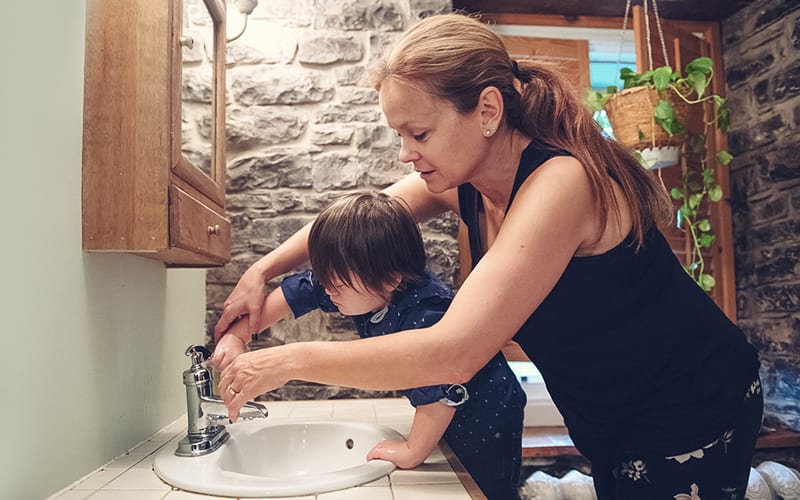
Bathroom safety checklist
Inspect pipes
Check pipes for rust, corrosion, and signs of leakage. Find out the size of the pipes and what they’re made of—watch out for lead pipes, which are common in houses built before 1986.
Test faucets and toilets
Check bathroom faucets for leaks or drips. Flush each toilet to make sure the bowl completely empties and refills correctly.
Test and clean showerheads
Turn on the shower in each bathroom. Note temperature and water pressure. If pressure is low, remove and clean showerheads to see if that solves the problem.
Check caulking
Inspect caulking around the shower and tub, as well as around bathroom tiles. Discoloration can be a sign of mold or mildew, including black mold. Make sure there are no holes or cracks, particularly at joints where walls, doors, and the floor meet.
Locate main shut-off valve
The main shut-off valve for your home’s water system will likely be under the bathroom or kitchen sink. Find it and turn it off to make sure it’s in good working order. When the valve is turned off there should be no water coming out of any of the home’s faucets.
Purchase a first aid kit
No matter how careful we are, accidents happen. Be prepared with a fully-stocked first aid kit that includes bandages, gauze, medical tape, and antiseptic. Keep it in a central place that will be easy to access when someone gets hurt.
Secure medications
Make sure prescription and over-the-counter medications don’t fall into the wrong hands. Keep them in a locking medicine cabinet or box, and properly dispose of all unused medications.
Prevent falls
We all know that slipping in the tub or shower is a common household accident. Make your bathroom safer for seniors by adding non-slip decals, grab bars, and non-slip bath mats.
If you or someone in your home is at higher risk for falls, consider a medical alert system with automatic fall detection.
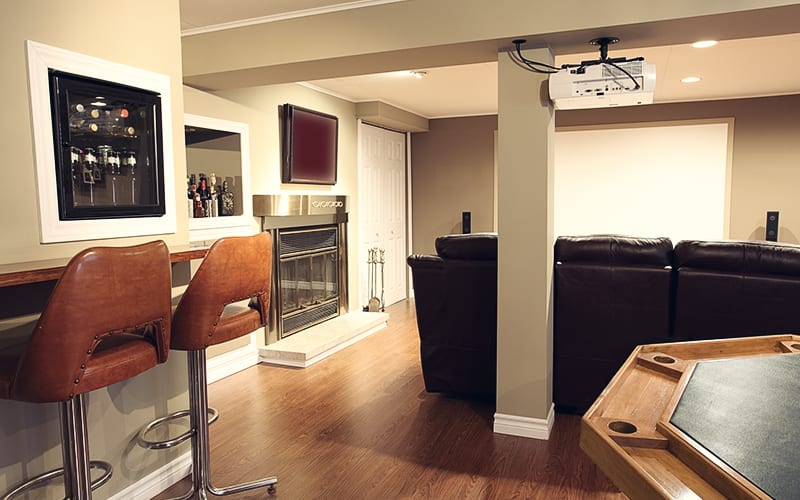
Basement safety checklist
Get to know the electrical system
Locate the main breaker panel for your home. Test the circuits to make sure everything is working properly. Label what each breaker controls to make things easier if the power goes out or you trip a breaker. Older homes may still use fuses instead of breakers—which can be less safe—so seek advisement from an electrician in that case.
Tune up the HVAC system
Whether it’s summer or winter, you should have the whole HVAC system inspected, cleaned, and tuned up. This will ensure that the furnace and air conditioner are safe and ready for action when you need them.
Inspect the water heater
Have a professional take a look at your water heater to make sure it’s installed properly and working like it should. Once a year, flush the tank to wash away sediment and extend the heater’s life. If you have a gas water heater, learn how to care for the venting system and pilot light. To prevent burns, keep the water heater set at 120 degrees or lower.
Clean air ducts and vents
Start life in your new home with a breath of fresh air by having ducts professionally cleaned. Air ducts and vents can harbor allergens and pollutants as well as potential fire hazards. Inspect ducts for signs of mold, and be on the lookout for clogs caused by insects, small rodents, or dust buildup.
Change air filters
Inspect the filter in your heating and air conditioning unit. Change it immediately if it’s dirty, and set a reminder to check and change it regularly. The average home only needs the air filter changed every three months, but if you have pets or allergies, you should check it monthly to make sure it doesn’t get clogged.
Make sure every breath you take is a fresh one with our air quality videos:
Look for foundation damage
Foundation damage isn’t common, but it can present serious flooding danger. Signs of possible damage include wet spots and cracks in walls or floors—especially over windows or doors, or where the walls and ceiling meet.
Insulate exposed pipes
Cold temperatures can cause pipes to freeze and burst. Make your pipes winter-ready by insulating them against frigid temperatures. Use fiberglass, tubular pipe sleeves, or foil insulation to wrap the pipes.
Check for drafts
Drafts around windows and doors can signal a potential security risk. Loose weather-stripping or other faulty installation can make it easier for a burglar to enter your home. Inspect all outside access points, and make sure they’re sealed up tight.
Check window and door locks
Ensure that all windows and exterior doors open easily and lock securely. If any windows have bars, verify that there’s a quick-release mechanism in case of an emergency. Add extra peace of mind with window or door sensors in areas that are rarely used.
Add proper lighting
Check that there’s enough lighting in stairways and storage or mechanical areas. Put light switches at the top and bottom of the stairs to help prevent falls.
Secure handrails
Try out the handrail along the stairs and shore it up if it feels loose or unstable.
Add non-skid tape to stairs
Keep loved ones from slipping on the stairs by adding a few strips of non-skid tape. You can also paint the last step white to make it more visible in low light.
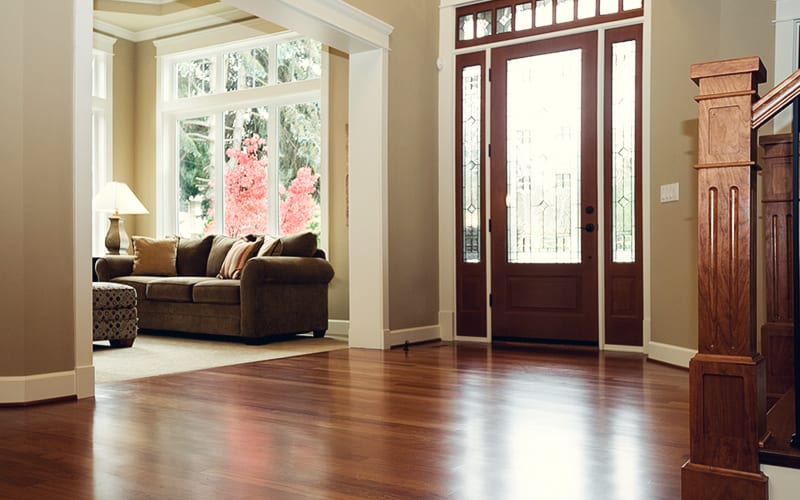
Hallway safety checklist
Check number of smoke and carbon monoxide detectors
There should be a smoke alarm and carbon monoxide detector on every floor of your new home. In addition to the kitchen, make sure all sleeping areas are covered.
Secure rugs
Prevent people from tripping over rugs by adding non-skid mats or adhesive tape to keep rugs in place.
Add nightlights
Make sure people don’t stumble down dark hallways. Add nightlights for safe passage after lights-out. Lights with motion sensors make your hallways safe and ensure that lights won’t disturb others or waste energy.
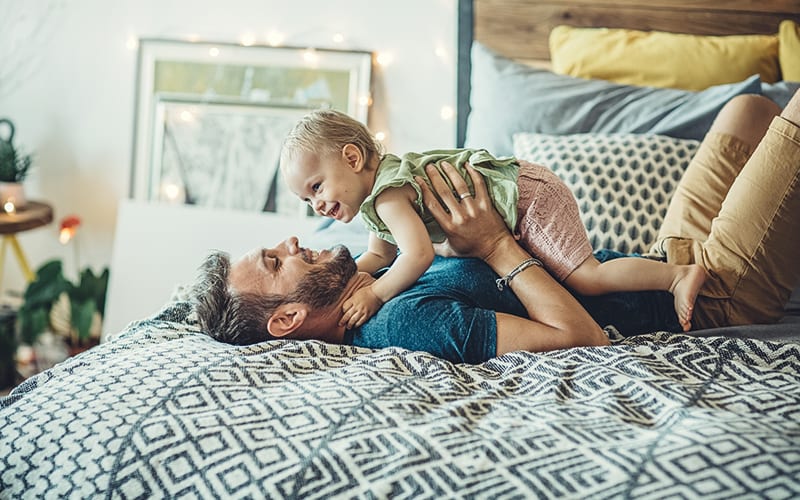
Bedroom and living spaces safety checklist
Create an emergency plan
Create an escape plan in case of a fire, and address other applicable emergencies that you may face. Depending on where you live, it may be an earthquake, flood, or a tornado. Whatever it is, prepare a thorough emergency plan and run drills to make sure everyone in the house knows what to do.
Check switch plates and outlet covers
Inspect outlets and light switches for missing or cracked covers, and replace or install as needed. If a cover is missing, check to make sure the contacts aren’t exposed. For homes with small children, add childproof outlet covers to protect little ones as they explore your new home.
Compile a home inventory
Protect your valuables and compile a thorough home inventory that catalogs your belongings. This will save you time and stress if you ever need to make an insurance claim due to damage or a break-in.
Get a safe
Put important documents and small valuables in a fireproof safe. Include birth certificates, financial records, social security cards, and other valuable items like jewelry or collectibles.
Repair damaged walls
Inspect walls for holes, tears in the drywall, or peeling paint. Repair any damage, sand, and repaint. If you have an older home, you should also check for lead-based paint, which was used until 1978. Use an EPA-certified lead test kit or hire a lead-safe certified contractor to test your paint and address any problems.
Hire a chimney sweep
A crackling fire is wonderful on a chilly night, but an errant nest or other debris in the chimney can turn that cozy scene into a disaster. Before using any fireplace or wood stove in your new home, have it professionally inspected and cleaned. And don’t neglect gas fireplaces—have gas logs cleaned and make sure all vents are unobstructed.
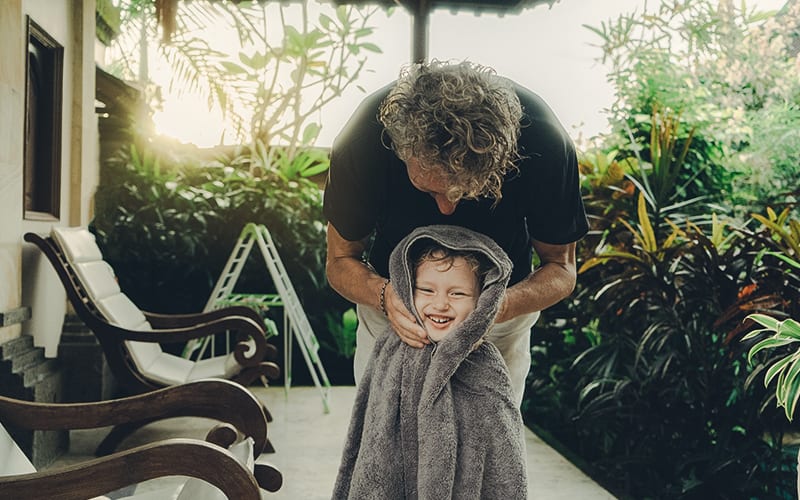
Outside safety checklist
Change the locks
Replace locks on every exterior door and add deadbolts. For added security, upgrade to smart locks with keyless entry and remote control.
Inspect the roof
Check for missing or cracked shingles and determine if repairs are needed. It may be worth hiring a roofer to do an up-close inspection that can identify hard-to-spot problems like dry rot, which can lead to sagging. Check for adequate insulation and venting to avoid possible ice dams in winter.
Add security lighting
Install security lights to keep burglars at bay. Lights with motion detection provide safe passage on walkways and in doorways, and they help stop intruders in their tracks. Smart lightbulbs are another way to upgrade your lighting and improve security—imagine the added safety when you can control exterior lights from your smartphone.
Inspect gates
Make sure all gates are in good repair, close tightly, and have a secure latch that can’t be tampered with. The best way to ensure gate security is to add two locks—one at the top, and another on the bottom.
Repair exterior damage
Closely examine all exterior borders and buildings, including fences, sheds, decks, awnings, and pergolas. Make repairs to preserve structural integrity and avoid hazards like tripping, slivers, or falling boards.
Inspect rain gutters and downspouts
Clogged gutters can lead to mold and deterioration that damages shingles and compromises your roof’s integrity. Check for adequate drainage and use a leaf blower or specialized gutter cleaning tool, like the Gutter Sense Gutter Cleaning Tool, to remove leaves and other debris.
Check window screens
Don’t make it easy for intruders to gain access to your home. Inspect all window screens for tears and repair or replace as needed. Make sure all window screen frames fit snugly, and replace any that are bent or loose.
Prune plants and trees
Unkempt hedges and trees give burglars a handy spot to hide. Make your yard less tempting by keeping bushes and trees neatly trimmed. A well-kept yard is also a sign that the house is no longer vacant, which can make a big difference if your new home was on the market for a long time.
Secure small entrances
Don’t overlook mail slots and pet doors when you secure your home. These entrances, although small, can make it easier for someone to enter your home.
Research security cameras and alarm systems
Burglars have reported that they skip homes with security cameras and alarm systems. Find out what security systems are available, and identify which type makes the most sense for your home.
Go to our YouTube channel for more help choosing a security system or camera:
Check for cracks
Examine driveways and walkways for damage. Repair broken bricks and stones, as well as cracked or crumbling concrete, to eliminate falling hazards.
Add a smart garage door opener
You’ll never leave the garage door open again when you add a smart garage door opener that you can open and close through an app on your cellphone or computer. Smart garage door openers send you alerts if you left the door open and allow you to monitor the garage from wherever you are.
Lock up hazardous materials
Fertilizers, paint, gasoline, weed killer, oil, and pesticides need to be locked up or stored up high to avoid an accidental poisoning. Never put leftover paint or other hazardous materials in juice or milk cartons, and keep everything clearly labeled.
Secure tools
Don’t leave landscaping tools scattered across the lawn or haphazardly stowed in the garage or shed. Even during the chaos of moving in, take time to find a secure spot to lock up lawn mowers, trimmers, and other tools.
Make house numbers visible
Be certain that emergency personnel can easily find your home. Post numbers that can be seen from the street. And make sure your house number can be seen after dark—add a light or use luminescent numbers. If you want to post your address on the mailbox, use the house number only and skip adding your name.
Sources
- National Fire Protection Association, “Home Fires Involving Cooking Equipment,” July 2020. Accessed June 2, 2021.
Recent Articles



